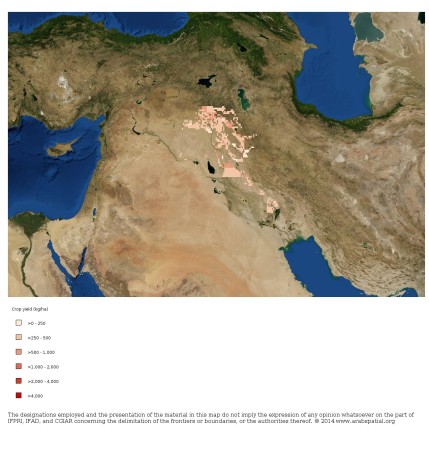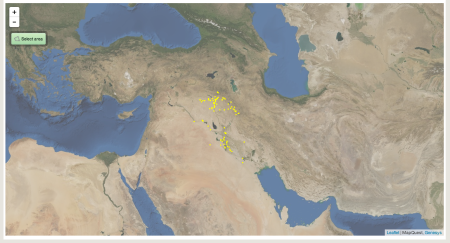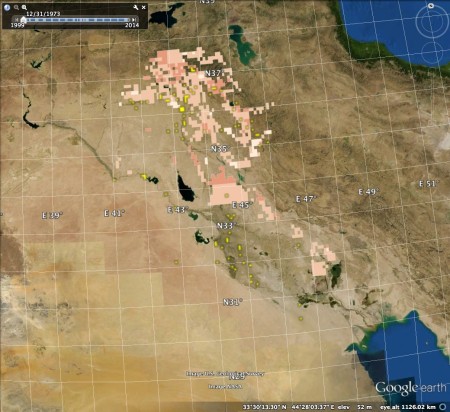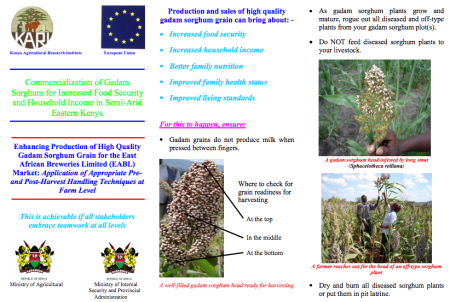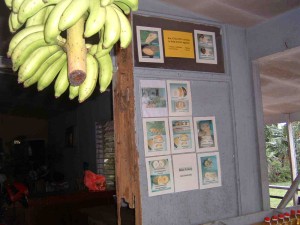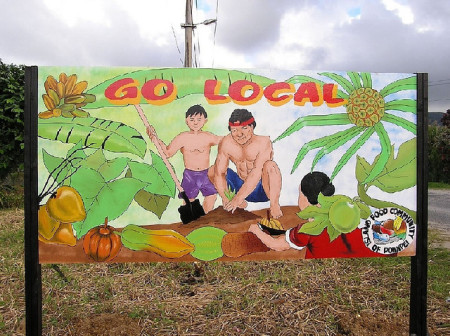I think that post on Kenya’s beer-brewing Gadam sorghum could do with a follow-up. Quite apart from the mystery of the origin of the variety, which in any case I’m sure is a mystery only to us sorghum illiterates, there are interesting lessons to be learned from the history of Gadam which could be relevant more generally to that group of crops we sometimes call neglected and underutilized. These are nicely illustrated by a couple of papers I found online while researching the previous post. And, yes, I know that we don’t usually consider sorghum a neglected or underutilized species (NUS); but it does have, in some places, at some times, some of the characteristics more commonly associated with crops like finger millet or quinoa: a bad reputation, chronic underinvestment, no markets, you know the kind of thing.
Anyway, it seems, for a start, that Gadam, along with other modern sorghum varieties, has actually been around for a while in Kenya, but was just not getting adopted. Why? Here’s an excerpt from the first paper, “The Role of the market in addressing climate change in the arid and semi-arid lands of Kenya: the case of Gadam Sorghum” (PDF):
Over the years research institutions including the KARI [Kenya Agricultural Research Institute] and the International Centre for Research in Semi-arid and Arid Tropics (ICRISAT) have been working to produce suitable dryland crops. This has resulted in the development of genetically superior cereal and legume crops in terms of yields, early maturity, drought tolerance or drought escaping and higher water use efficiency. Among the cereals, several varieties of sorghum have been developed and released including KARI Mtama 1, Seredo and Gadam among others but the adoption and utilization of the same has been generally poor. The adoption of a technology is affected by many factors but this paper explores two factors (changing dietary habits and lack of markets) and the efforts made by the Kenya Arid and Semi-Arid Lands Research Programme (KASAL) to overcome them and improve the adoption of Gadam Sorghum.
Markets proved key in the case of Gadam. Kenyans prefer maize to sorghum for food, but Gadam was found to have good beer-making properties.
Although KARI had developed several sorghum varieties over time none of these had been targeted to the brewing industry as the main focus was to provide a higher yielding variety for food. As the varieties produced were targeting semi-arid areas with their associated climatic conditions they had to be early maturing and drought tolerant. In association with EABL [East African Breweries Ltd.] several KARI sorghum varieties were tested and Gadam variety was found suitable for making malt beer. Gadam is a short (Figure 4), early maturing sorghum variety (flowers in about 45-52 days and matures in 85-95 days depending on altitude.) The variety matures earlier than the other sorghum varieties and any of the maize varieties making it an ideal variety for areas receiving low and unreliable rainfall. It has been reported to survive and produce grain with approximately 200 mm of rainfall in Machakos area. The grain is high in starch, low in protein and tannin making it suitable for malting. Gadan grain has 75% carbohydrate compared to 67% in barley and 66% in maize making it a good alternative source of starch. Further analysis showed that Gadam had low levels of oil and proteins which makes it good for industrial processing. Through tests for enzymatic digestion of starch, Gadam was found to have high levels of fermentable sugars.
Once the right variety had been found, a model of smallholder production had to be developed that would allow EABL to abandon its predictable preference for being supplied by large-scale contracted farmers. That was found in a private-public partnership based on commercial production clusters of 20-30 members, each with a collection centre serviced by a private company that did the bulking and shipping to EABL; but with certified seed, training and quality control provided by different government agencies, and micro-finance by various banks.
It seems to have worked. Gadam farmers keep lower quality grain back to eat themselves or feed to chickens (leading to a bit of a poultry industry), and buy maize for food and other stuff with the profits they make from selling the good stuff to EABL. Everybody wins.
So is it all sweetness and light? Another paper, “The potential role of sorghum in enhancing food security in semi-arid eastern Kenya: A review” (PDF), hints at further opportunities:
Due to increased health concerns and awareness, the use of sorghum products has seen a gradual increase as reflected by the quantity and range of processed sorghum products sold in local supermarkets (Kilambya and Witwer, 2013).
But it also notes that increased interest in sorghum by both brewers and the consumer has not yet been matched by public investment in research, breeding and seed production:
The agricultural sector development strategy, 2010-2020 also noted that the decline in productivity of orphaned crops was partly arising from low use of improved seeds due to poor distribution systems and the monopoly of the Kenya seed company which concentrates its operations in high rainfall areas (GoK, 2010). The other major problem facing the sorghum subsector is the dominant position of the single market provided by East African breweries for the Gadam sorghum which is widely grown by farmers in the semi-arid eastern Kenya. Although EABL has helped to address the problem of marketing, it has led to a situation where farmers do not have an alternative market to sell their surplus produce or grains that do not meet the standards set by EABL. Cases of grains below standard have been encountered due to seed impurities especially mixing of varieties common with commercially supplied seed lots (Miano et al., 2010). The other problem facing the sorghum sub-sector is an image problem where it is considered to be a food crop for the poor and vulnerable communities in the ASALs. As such its consumption in the urban areas is extremely low and many urban dwellers prefer maize thus lowering the to expand the market and increase acceptance of sorghum among the more financially endowed middle class residing in urban areas.
So, one could truthfully say that there is now in Kenya renewed interest in a traditional crop, but that would be only part of a much more complex story. There is really only increased interest in one, exotic variety of that crop; we know that local landraces persist alongside Gadam, but for how long? That interest depends on a single commercial company, and could end tomorrow. And although there are encouraging signs of wider public acceptance of some of its benefits, sorghum still has an image problem in the cities.
I mentioned some general lessons for NUS at the top of this piece. What are they? I’d say the main one is the obvious one: diversify your risk. Promote diversity of the crop, rather that just one or two varieties. Preferably by improving local varieties rather than parachuting new stuff in. Make sure the private and public sectors are working together. And don’t rely on a single value chain. Even if it is beer.
